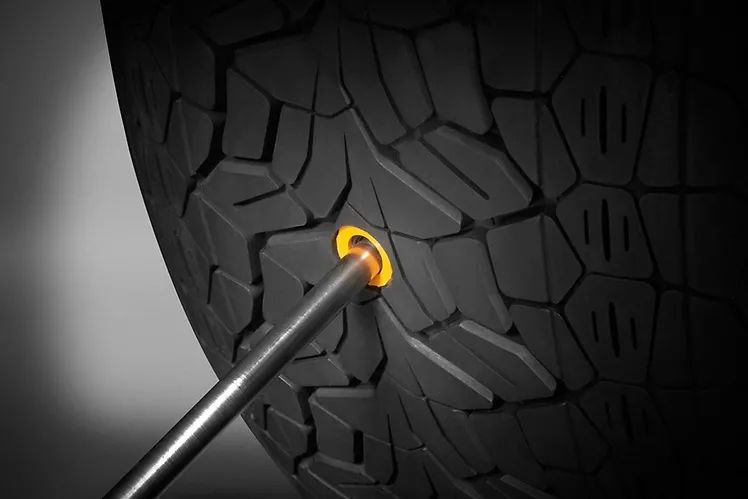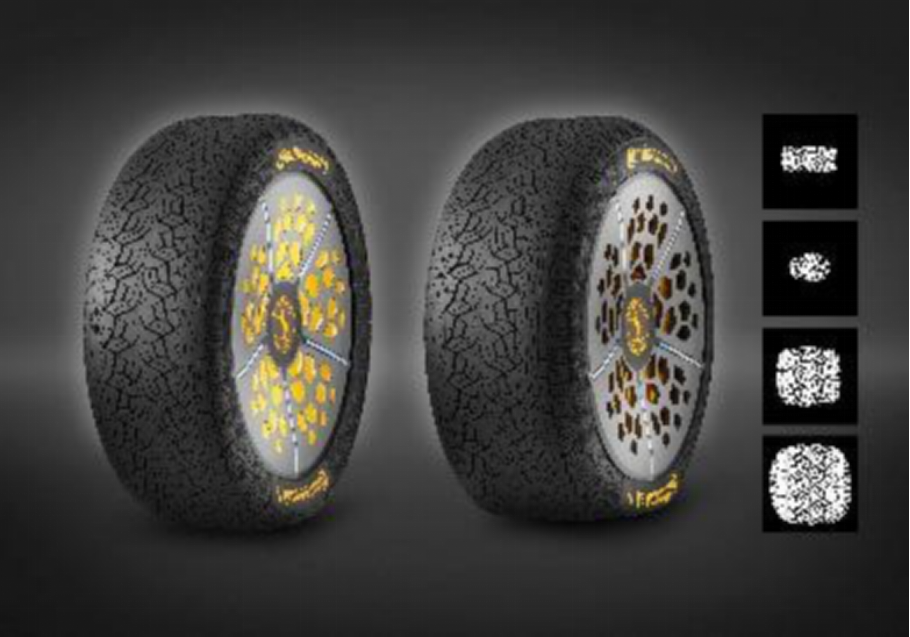This article is reproduced from autocarweekly public account
Author: Du Debiao
If the three key words of new energy vehicles are range, safety, and intelligence, then at least when it comes to safety, we should not only consider “electrocution”, but also whether the shoes worn on the four feet are reliable enough.
After all, experts usually say that “as the only thing on the car that touches the ground…”.
In the past, our understanding of tires was related to “safety”, and the extended topics were the trade-off between “performance tires” and “quiet tires”, or the advantages and preferences among several big brands such as Michelin, Goodyear, German Continental, and Pirelli, but they are still within the traditional business scope of tires.
The transformation of energy and the rise of electric vehicles have changed our context of discussing tires. Even in terms of safety, because pure electric vehicle models of the same specifications are heavier, how to maintain braking performance that is at least the same level as that of the gasoline vehicle era? Apart from adjusting the calipers, tires are also crucial.
But this is only one of the changes. When the electric motor of a pure electric vehicle creates a near-zero noise environment for you, the tire noise is innocent and magnified. Therefore, brands that rely on the quiet features of pure electric products to promote luxury positioning have become more demanding in studying tires, aiming for better braking performance, lower noise, and—some kind of smarter performance, in sync with autonomous driving.
In the era of energy transformation, we often focus on fashionable concepts such as range and autonomous driving, but in the era of interconnection of all things, no one can be isolated. We can regard tires as a microcosm of automobile transformation period and consider how to adapt and evolve. We can also reflect on the progress of the automotive industry with it—especially under the background of a global goal like carbon neutrality.
This year happens to be the 150th anniversary of the German Continental tire brand. In pure electric vehicle models in Europe and the Americas, Continental has obtained more than 40% and 50% of the original equipment certification, respectively. In the high-end electric vehicle market with a price of more than 300,000 RMB in China, Continental has obtained more than 64% of the original equipment share. Let’s take a look at how tires interpret survival of the fittest in the field of electric vehicles and how this 150-year-old company has always been invincible through such “interaction”.
Bronze Age
Innovation is necessary.
During the era of internal combustion engines, manufacturers optimized the air intake system to improve combustion efficiency and explore performance potential. Evolution has always been linear according to the timeline, such as from camshaft timing, to valve lift, to electronic control, to compression ignition…
Tires are also evolving based on their own responsibilities, although there are always imperfections. Based on trade-offs and preferences, tires have different types including quiet tires, performance tires, and neutral tires. But the precondition for safety will always remain unchanged.In the automotive industry, we all know that run-flat tires are safer than normal tires during high temperatures in summer. However, run-flat is not the end game. Leading manufacturers such as Continental, who pursue excellence, have developed ContiSeal self-repairing technology. It utilizes a layer of sticky sealant attached to the inside of the tire. When a foreign object with a diameter of less than 5 millimeters punctures the tire surface, the technology can automatically seal the hole to prevent air leakage.
This is like the German team’s defense during their prime, with Neuer, who can do everything, standing behind Boateng and Hummels. German manufacturers always have an eye for safety. Having produced carriage and bicycle tires in history, the German brand Continental probably has its unique insights.
This “enhanced” design theory can also be seen in Continental’s tire noise reduction technology. It is believed that you have heard that high-end car models claim to have soundproofing layers in some parts, but tire noise reduction can only rely on the supplier’s innovation and technology.
Their complementary effect will improve the soundproofing of the entire vehicle. Continental’s ContiSilent noise reduction technology designs a layer of ether-based polyurethane foam layer on the surface of the tire internally, which can reduce the noise in the car by up to nine decibel values. It’s no wonder that brands like BYD, which are trying to build their reputation, prefer to use Continental products.
The Silver Age
For the automotive industry, the energy revolution is like a nuclear fusion effect.
Dr. Juan Botero (Vice President of Key Account Management for Continental Tires Asia Pacific) said that “new ideas, new technologies, and even new funding brought by emerging forces will bring end users a driving experience completely different from traditional cars”.
The requirements for tires of electric vehicles are multidimensional, rather than the binary thinking of “performance-comfort” during the era of traditional fuel vehicles. For example, high loads impose higher requirements on braking performance. The data of endurance not only squeezes battery capacity and three electric efficiencies but also details such as lightweight car bodies and low rolling resistance tires.
The challenges are mutually contradictory: braking performance, noise reduction effect, and high load capacity. Especially for pure electric vehicle models that generally emphasize performance advantages, such as the BYD Han’s 0-100 km/h acceleration time generally being in the 3-4 second range.
The cruelty of reality requires you to reconcile contradictory things. Hardcore technology is the only solution and the best way to face reality.
Continental’s solution is to introduce the ContiSilent noise reduction technology (as mentioned above) in the Asia-Pacific region, while strengthening the wet braking effect, as well as possessing a low rolling resistance coefficient and high load capacity.The trend from autonomous driving that was once a suggestion has now become a threshold. The associated technologies are still within the product category and suppliers need independent thinking capabilities to match the concept of future intelligent travel, in order to keep a place in the market.
Years ago, the suspension system was electrified and became adaptive suspension. Safety has changed from passive to active, and even forward-thinking. German tire manufacturer, Michelin, made preparations for this change, not only in the name of “the only part that comes in contact with the ground”, but also in the name of innovation.
The Golden Age
Despite uncertainties and overconsumption of autonomous driving, adding the prefix “automation” to safety technologies has generally advanced the field, perhaps because the goals are relatively simple.
For example, tire pressure monitoring.
Four years ago, Michelin released two technologies, ContiSense and ContiAdapt. The former can monitor tire tread depth and temperature, with the original purpose of preventative monitoring that can notify the driver synchronously of tire damage.

The latter technology goes a step further by automatically adjusting tire pressure. For example, in rainy or snowy weather and on slippery roads, the system can use mini air compressors integrated in the wheels to lower tire pressure, increasing tire contact with the ground and ensuring traction. Conversely, on dry roads, reducing contact surface area and increasing tire pressure can lower rolling resistance and increase range.

It’s a bit like a real-life version of Marvel. From being unaware to synchronizing information, this represents a technical and ideological transformation. It can also be considered a benefit brought by the subdivision of safety fields under the theme of automation.
But this also depends on the manufacturer’s understanding and perceptiveness of automation. For example, how can automotive component suppliers become data collectors? (Collecting information from sensors that may be installed on tires in the future, such as road information, braking performance, energy-saving data, etc.) This is also what Michelin has been studying while considering the concept of intelligent travel in the traditional way of researching technology.
From small tire components to travel as a whole, both aspects will gradually converge under the bond of automation and intelligence. However, intelligentization not only endows vehicles with independent thinking ability but also eliminates the distinct main and secondary relationships between components and OEMs, making each component an important factor in vehicle operation.
After all, tires have unique pathways to obtain information, but this also severely tests the innovation and technological capabilities of suppliers, as Michelin is doing today.
This article is a translation by ChatGPT of a Chinese report from 42HOW. If you have any questions about it, please email bd@42how.com.
